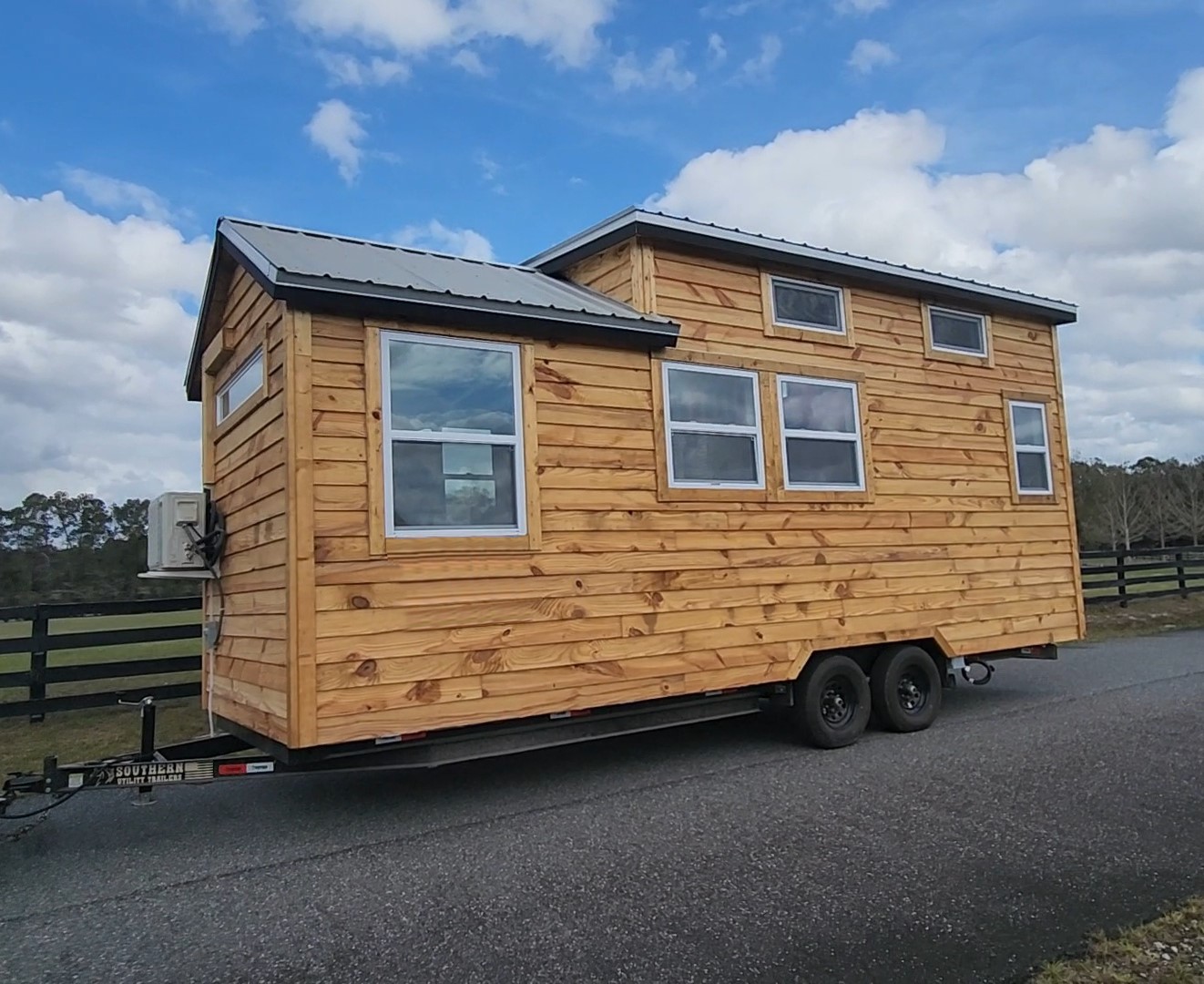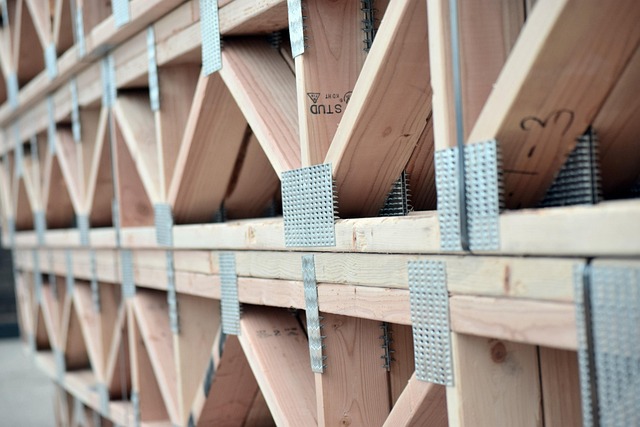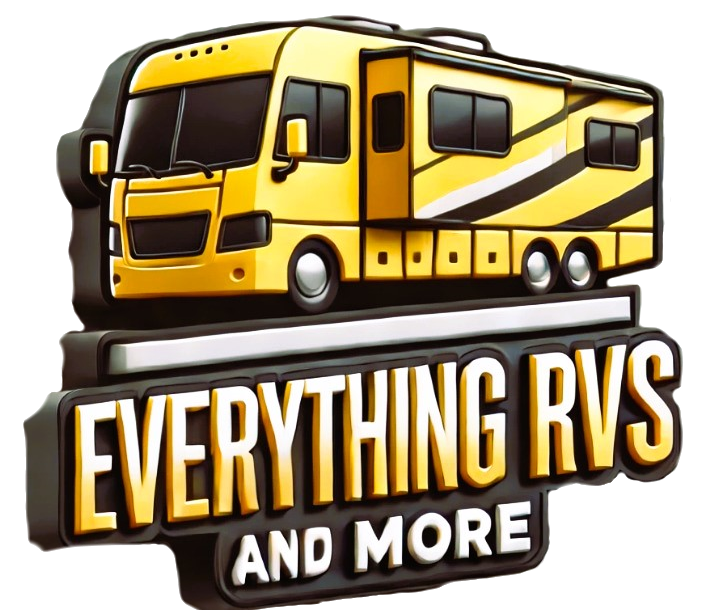Affiliate Disclosure: I earn commissions if you shop through the links below at no additional cost to you.
Last Updated on March 2, 2025 by Jeremy
Introduction: Embracing the Tiny Home Movement
Ever wondered how to build a tiny home on a trailer but found yourself lost in the details?
In a world where “bigger is better” has been the norm, the tiny home movement is proving that simplicity can be the key to a fulfilling life. More people are downsizing, reducing their ecological footprint, and embracing financial freedom by trading traditional homes for compact, mobile living spaces.
A tiny home on a trailer offers:
✔ Mobility – The ability to relocate whenever adventure calls.
✔ Affordability – A fraction of the cost of traditional homes.
✔ Customization – A home built to suit your lifestyle and needs.
✔ Sustainability – Reduced energy use and eco-conscious building materials.
Before you dive into construction, it’s crucial to set realistic expectations—this is a serious project requiring careful planning, budgeting, and an understanding of zoning laws. Let’s break it all down so you can build a tiny home that’s both practical and personal.

Step 1: Planning Your Tiny Home Build
A solid plan is the foundation of any successful build. This includes legal considerations, selecting the right trailer, designing your layout, and creating a budget.
Understanding Local Regulations and Zoning Laws
Before building, research local zoning codes, weight restrictions, and road laws for trailer homes in your area. Regulations vary, and you may need permits or approvals, especially if you plan to park your tiny home permanently.
🔹 Check with local building authorities.
🔹 Research RV and mobile home classifications.
🔹 Verify road safety requirements for mobile tiny homes.
Choosing the Right Trailer for Your Tiny Home
The trailer is the foundation of your tiny home, so selecting the right one is critical. Consider:
✔ Size – Determines the square footage of your home (typical range: 16ft – 30ft).
✔ Weight Capacity – Must support your entire home, including appliances and furnishings.
✔ Trailer Type – Options include gooseneck trailers (stable for towing), drop-axle trailers (lowers floor height for more interior space), and deck-over trailers (flat surface, but higher off the ground).
Designing Your Tiny Home: Balancing Aesthetics with Functionality
A great tiny home maximizes space while staying practical and comfortable. When designing:
✔ Optimize storage – Use built-in furniture, lofts, and under-floor compartments.
✔ Prioritize natural light – Large windows make small spaces feel open.
✔ Use multi-purpose features – Folding tables, Murphy beds, and convertible furniture save space.
✔ Ensure mobility – Keep the weight balanced to maintain towing stability.
Budgeting & Creating a Timeline
Even though tiny homes are more affordable than traditional houses, costs can add up.
💰 Typical Costs:
- DIY Tiny Home Build: $10,000 – $50,000
- Pre-Built Tiny Home: $50,000 – $150,000
📅 Timeline:
- 3–6 months for experienced builders.
- 6–12 months for first-time builders.
Step 2: Gathering Tools and Materials

Now that your plans are in place, it’s time to gather your essential tools and materials.
Must-Have Tools for Tiny Home Construction
🔹 Circular Saw – Essential for cutting wood.
🔹 Drill & Driver Set – Needed for assembly.
🔹 Level & Measuring Tape – Ensures accuracy.
🔹 Nail Gun & Hammer – Speeds up framing.
🔹 Jigsaw – Great for intricate cuts.
🔹 Safety Gear – Gloves, goggles, ear protection.
Choosing Sustainable and Durable Materials
Prioritize durable, energy-efficient, and eco-friendly materials:
✔ Insulation – Spray foam, wool, or rigid foam for energy efficiency.
✔ Exterior Siding – Cedar, metal, or composite for weather resistance.
✔ Flooring – Reclaimed wood, bamboo, or cork for sustainability.
✔ Windows – Double-pane glass to maximize insulation.
Shopping Smart for Building Supplies
💡 Tips:
- Compare prices between local stores and online suppliers.
- Buy in bulk to get discounts.
- Check for salvaged materials—many reclaimed materials are high-quality and budget-friendly.
Step 3: Building the Structure

Securing the Tiny Home to the Trailer
Your tiny home must be firmly anchored to the trailer to ensure safety.
🔹 Use steel brackets, bolts, and welded reinforcements to secure the frame.
🔹 Distribute weight evenly to prevent trailer sway when towing.
🔹 Consider installing trailer brakes for added control.
Installing Insulation and Subflooring
✔ Lay a moisture barrier on the trailer bed.
✔ Install insulation panels to maintain temperature control.
✔ Add a sturdy subfloor (plywood or OSB) to provide a strong foundation.
Framing Your Tiny Home
Follow these steps for a sturdy structure:
1️⃣ Build the floor frame and attach it securely to the trailer.
2️⃣ Assemble and raise the walls, securing them to the floor.
3️⃣ Install the roof structure, ensuring it’s strong enough for potential solar panels.
4️⃣ Sheath the exterior walls to reinforce stability.
Step 4: Interior & Exterior Finishing – Bringing Your Tiny Home to Life

With the walls up and the structure secured, it’s time to make your tiny home feel like home. This step focuses on maximizing space, adding personal style, and protecting your investment with proper weatherproofing.
Smart Interior Layout & Space-Saving Solutions
A well-designed tiny home feels bigger than it is by using smart layouts and multi-purpose elements.
✔ Built-In Storage: Hidden compartments under stairs, beds with drawers, and storage benches keep clutter at bay.
✔ Foldable & Convertible Furniture: Murphy beds, fold-down tables, and slide-out counters create flexibility.
✔ Vertical Space Utilization: Install overhead shelves, pegboards, and wall-mounted organizers.
✔ Large Windows & Mirrors: Brighten up the space and create the illusion of openness.
💡 Pro Tip: Stick to a consistent color palette (light, neutral tones work best) to make the space feel larger and more cohesive.
Exterior Finishing: Durability & Protection
Your tiny home exterior needs to withstand the elements—whether you’re stationary or on the road.
✔ Weatherproof Siding: Choose between metal, wood, or composite panels for durability.
✔ Waterproof Roofing: Metal or asphalt shingles provide long-lasting protection.
✔ Sealed Windows & Doors: Proper insulation and weatherproofing prevent leaks and drafts.
✔ Ventilation & Moisture Control: Install vents and dehumidifiers to prevent mold buildup in a small space.
💡 Pro Tip: If you plan to travel frequently, aerodynamic design and lightweight materials will improve fuel efficiency and road stability.
Step 5: Installing Essential Systems – Power, Plumbing, & Climate Control

Now, let’s turn your tiny home into a fully functional, off-grid-ready living space.
Electrical & Power Setup
Decide how you’ll power your home:
🔹 Grid Connection: Hook up to traditional power sources at RV parks or tiny home communities.
🔹 Solar Power: Install solar panels and battery storage for off-grid living.
🔹 Generator Backup: Useful for emergency power needs.
Installation Basics:
✔ Plan electrical wiring before installing walls.
✔ Use low-energy LED lighting and appliances to conserve power.
✔ Install outlets strategically to avoid extension cord chaos.
Plumbing & Water Systems
🔹 Freshwater Supply: Tanks, city hookups, or rainwater collection.
🔹 Greywater & Waste: Composting toilet, septic tank, or RV-style system.
🔹 Water Heating: Tankless propane water heaters are space-saving and efficient.
💡 Pro Tip: If you plan to stay mobile, flexible plumbing lines will prevent cracks from movement.
Heating & Cooling
✔ Mini-Split System – Energy-efficient heating and cooling.
✔ Wood Stove or Propane Heater – Ideal for off-grid warmth.
✔ Roof Vent & Windows – Keep airflow fresh and prevent condensation buildup.
💡 Pro Tip: Insulation matters! Properly insulating your tiny home reduces energy costs and keeps temperatures stable year-round.
Step 6: Final Touches & Preparing for Tiny Home Living

You’re almost there! Now, it’s time to personalize your space, handle the final details, and prepare for life in your new tiny home.
Decor & Customization – Make It YOUR Home
Now that the essentials are in place, it’s time to make your tiny home feel like home:
✔ Add Plants & Natural Elements – Brings life and freshness into your space.
✔ Use Multi-Functional Decor – Choose stylish items that also serve a purpose.
✔ Personalize with Textiles – Soft rugs, cushions, and curtains make the space cozy.
💡 Pro Tip: Keep a balance between aesthetics and function—if it doesn’t serve a real purpose, it doesn’t belong in a tiny home!
Mobility & Travel Considerations
Planning to move frequently? Here’s what to double-check before hitting the road:
✔ Secure Loose Items: Use latches and straps to prevent shifting.
✔ Check Trailer Brakes & Hitch: Safety first! Inspect everything before towing.
✔ Plan Overnight Parking: Research RV-friendly stops and tiny house communities before long trips.
💡 Pro Tip: Test-drive short distances first! This helps you adjust to towing before taking on longer hauls.
Step 7: Maintenance & Long-Term Tiny Home Living
Your tiny home is built to last, but like any home, it requires upkeep.
Routine Maintenance Checklist
✅ Exterior Inspection: Check siding, roof, and windows for wear.
✅ Weatherproofing: Reseal joints, especially before winter.
✅ Plumbing & Electrical: Ensure all systems are working properly.
✅ Ventilation: Clean air vents to prevent moisture buildup.
💡 Pro Tip: Keeping a minimalist lifestyle will make maintenance easier and ensure your tiny home stays organized.
Final Thoughts: Your Tiny Home Adventure Begins!
You started this journey with an idea, a dream of freedom, mobility, and self-sufficiency. Now, you’ve got a solid plan—from choosing the right trailer to framing walls, installing systems, and putting the final finishing touches on your dream home-on-wheels.
But this is more than just a construction project.
It’s about breaking free from rent and mortgages.
It’s about living life on your terms—anywhere, anytime.
It’s about trading square footage for experiences, and clutter for clarity.
The Road Ahead: Are You Ready?
Every nail you hammer, every design choice you make brings you closer to a life where:
✔ Your home moves with you.
✔ Your bills are smaller, but your freedom is greater.
✔ You wake up to new views, not new mortgage payments.
You now have the blueprint, the knowledge, and the power to build your own tiny home. The only thing left? Taking action.
What’s Your Next Move?
🔹 Already started? Share your build progress with us! We’d love to feature real-life tiny home journeys.
🔹 Need help designing? Check out our recommended Tiny Home Plans & Materials Store for curated blueprints and high-quality materials.
🔹 Still dreaming? Bookmark this guide and start your research. The best time to start your build? Yesterday. The second-best time? Right now.
Your Adventure Starts Here. Your Tiny Home Awaits.
Drop a comment below—What excites you most about tiny home living? 🚀🏡 Let’s build this movement together.




.jpg/:/cr=t:5.56%25,l:0%25,w:100%25,h:88.89%25/rs=w:1240,h:620,cg:true)



Leave a Reply